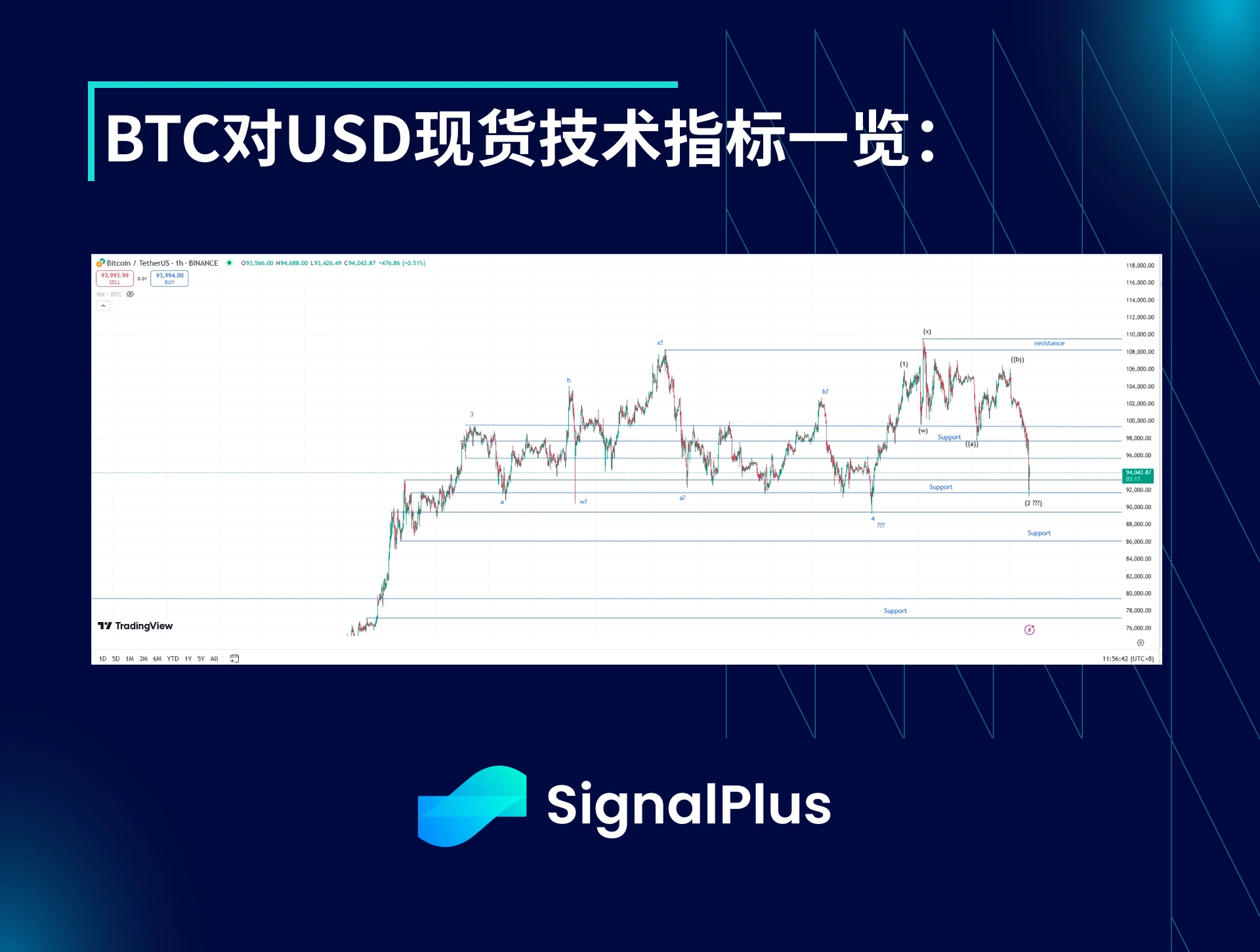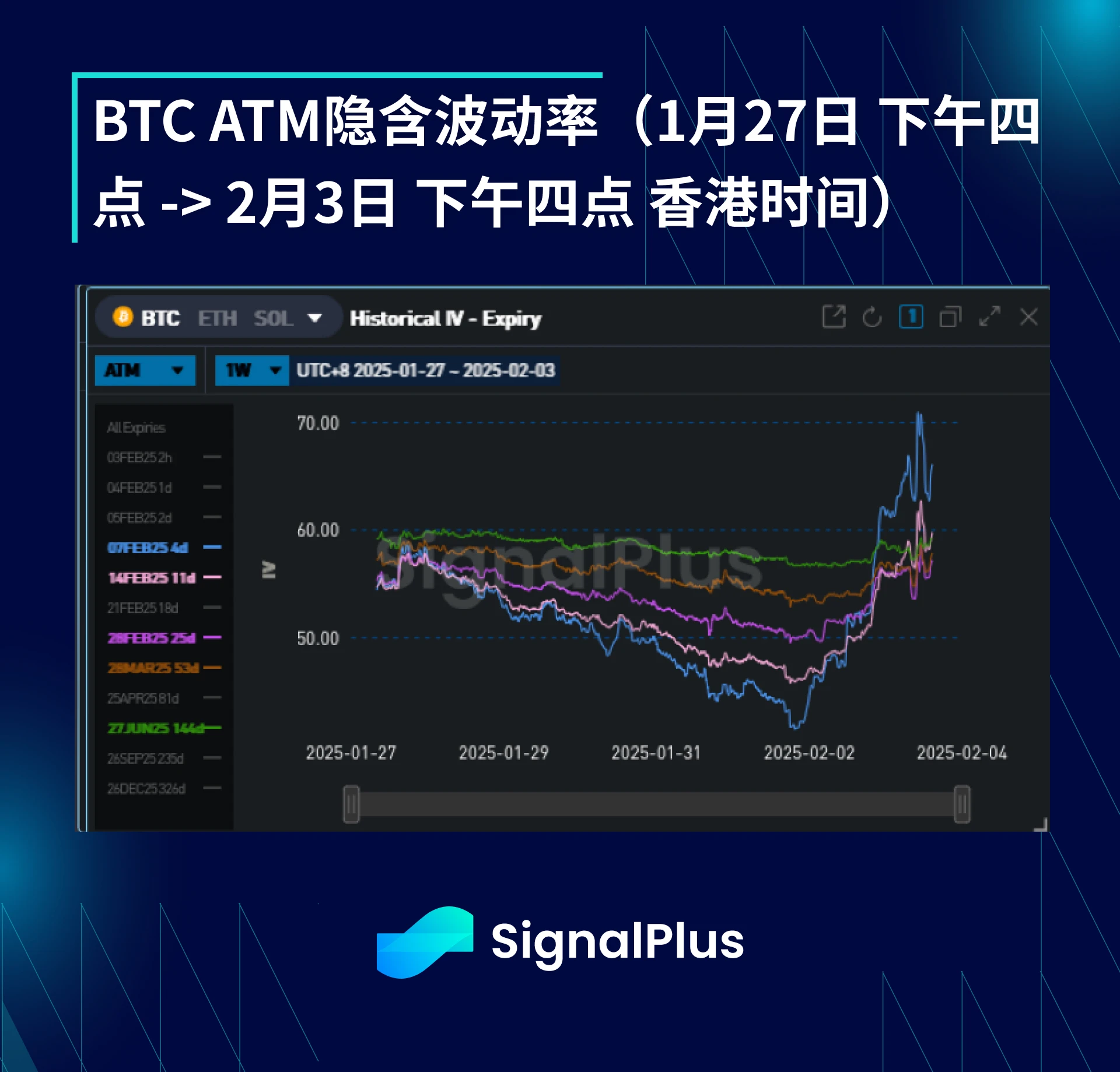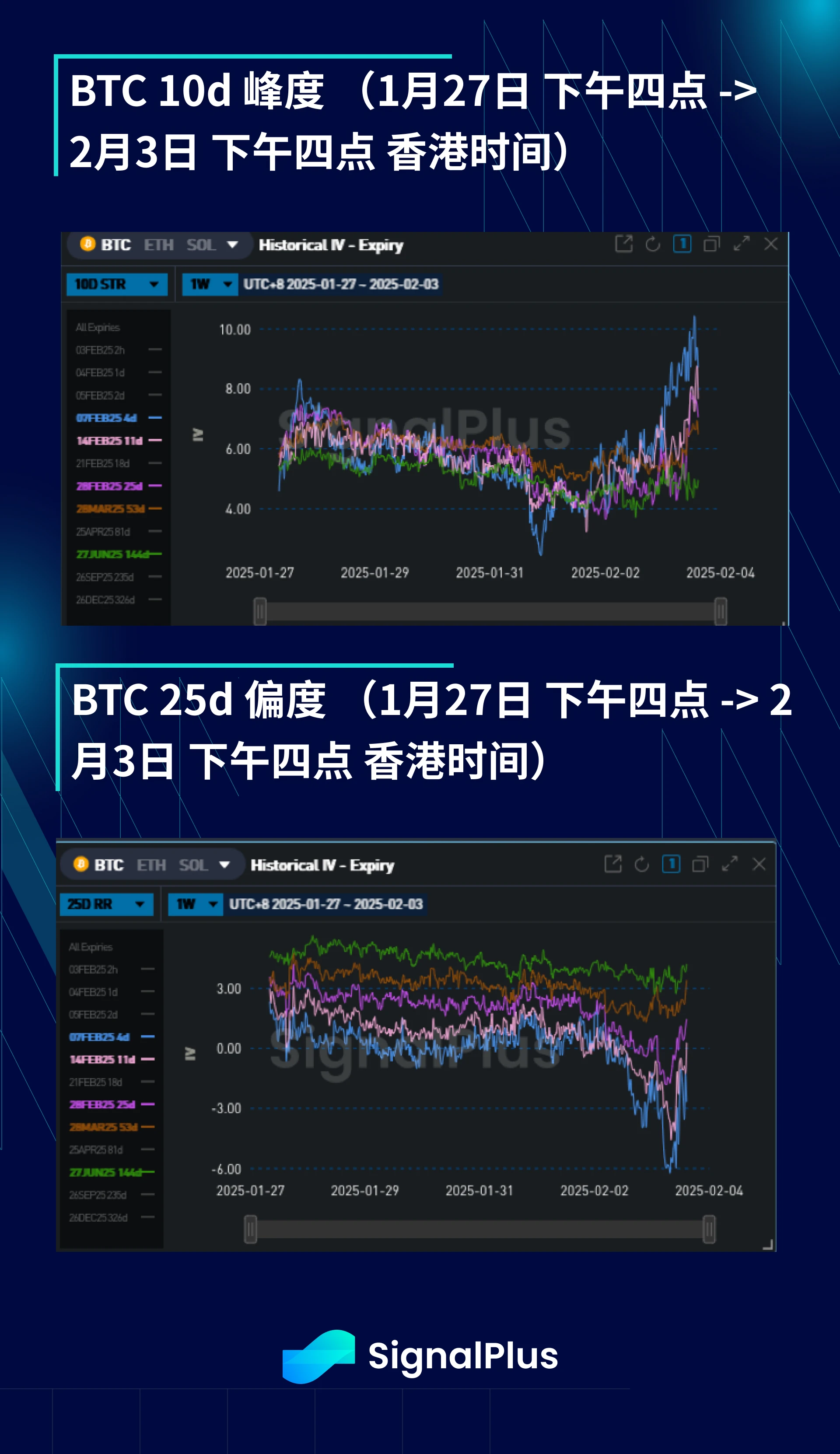
Key Indicators: (January 27, 4 PM -> February 3, 4 PM Hong Kong Time)
- BTC against USD decreased by 3.8% (98.8k USD -> 95.1k USD), ETH against USD decreased by 16.0% (3.07k USD -> 2.58k USD)
BTC against USD Spot Technical Indicators Overview

BTC against USD successfully rebounded from our marked key support level of 98k USD early last week, attempting several times to test 106k USD in the following week, but ultimately failed to gain enough momentum to form a new upward trend. By the weekend, due to Trump's tariff news and the market holding weak long positions above 102k USD, strong liquidations were triggered, causing the price to drop below 98k USD and briefly extend down to 91k USD.
At this point, making a short-term judgment is quite tricky. If the price drops below 90k USD, it will invalidate the previous 4th wave upward (as illustrated) and raise questions about our longer-term trajectory timeline for the spot market. Greater support will be between 89-86k USD, and if broken, it could expose us to support levels of 75k USD or even lower.
Market Themes
For most of last week, the market seemed to have digested the impact of DeepSeek's release of the R1 model. Although necessary adjustments occurred in stocks like NVDA, overall, US tech/AI stocks gradually regained lost ground this week, partly due to Powell's slightly dovish statement at the FOMC meeting on Wednesday. However, the market began to stir again over the weekend as Trump fulfilled his promise to increase tariffs on Mexico, Canada, and China, breaking the hopes of some that the recent easing rhetoric might lead to a pause in tariff increases.
From now on, the key narrative in the market may revolve around how to respond to this global trade war. There remains considerable divergence in the market, with some players believing that the market's "expectation" of increased tariffs means the reaction will only be temporary. Others emphasize that the Trump administration is seriously considering withdrawing from global affairs, which could lead to retaliatory higher tariffs. Due to this divergence, it seems we are about to enter a period of localized turmoil until the market regains balance and reasonably prices this risk.
As digital currencies were the only tradable assets when the tariff news was released over the weekend, the Bitcoin market faced immense pressure, dropping to 96k USD before traditional finance opened on Monday. With the heavy pressure after the traditional market opened, the cryptocurrency market triggered another round of liquidations, causing Bitcoin to plummet to 91k USD. Meanwhile, Ethereum once again demonstrated its "small coin" characteristics, plummeting nearly 20% after breaking the key 3k USD support level, reaching as low as 2.5k USD.
BTC Implied Volatility

Despite a series of fluctuations surrounding US stocks (due to the revaluation of AI stocks after DeepSeek's release) and the Fed's statements midweek, Bitcoin's actual volatility remained low this week, fluctuating around 40-45, while implied volatility peaked at over 50 early in the week. Part of the reason may be that Wednesday to Friday was the Chinese New Year (leading to reduced volatility in the Asian time zone), with the price maintaining a comfortable range of 98k USD-106k USD for most of the week, naturally suppressing actual volatility. However, the weekend's tariff news triggered a sharp price breakout and a round of liquidations, pushing both actual and implied volatility higher. The implied volatility for the February 7 expiration briefly rose from a low of 42 to 71 over the weekend, then fell back to around 65.
At the far end of the curve, implied volatility has generally continued to decline. Due to the spot price's ongoing lack of momentum to push above 105k USD, bets on the price direction have been withdrawn, and we have seen a significant amount of liquidation above the March expiration date in the market. Additionally, since the Trump administration's working group is unlikely to push for a savings plan for cryptocurrencies until at least the second half of this year, the tail risk of explosive price growth in the short term has been eliminated. Nevertheless, the implied volatility at these longer-term maturities was still pulled higher by the increase in actual volatility on Monday, also preparing for localized price turbulence following the onset of the trade war in the macro context.
BTC Kurtosis/Skewness

As the spot price was threatened and broke through the local support level of 98-100k USD, triggering liquidations and causing high actual volatility, the skewness in the short-term maturities sharply tilted downward over the weekend. However, after the short-term positions were liquidated, as the spot price rebounded to 94k USD, the skewness quickly recovered from its low point. At the far end of the term structure, although implied volatility did indeed rise as the price fell, the skewness remained relatively stable.
The kurtosis price remained quite stable in the short-term maturities. In the short term, due to the demand for the downside wing after the price breakout, the kurtosis surged sharply for a brief period.
Wishing everyone good trading luck this week/month!

You can use the SignalPlus trading indicator feature at t.signalplus.com for more real-time cryptocurrency information. If you want to receive our updates instantly, feel free to follow our Twitter account @SignalPlusCN, or join our WeChat group (add the assistant's WeChat, please remove the spaces between the letters and numbers: SignalPlus 123), Telegram group, and Discord community to interact with more friends. SignalPlus Official Website: https://www.signalplus.com
免责声明:本文章仅代表作者个人观点,不代表本平台的立场和观点。本文章仅供信息分享,不构成对任何人的任何投资建议。用户与作者之间的任何争议,与本平台无关。如网页中刊载的文章或图片涉及侵权,请提供相关的权利证明和身份证明发送邮件到support@aicoin.com,本平台相关工作人员将会进行核查。



